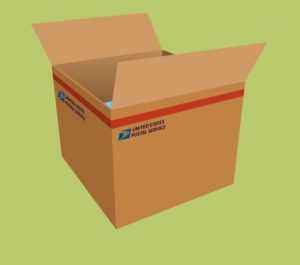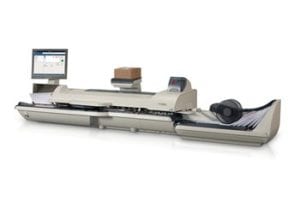
How to Mail a Box: Everything You Need to Know
If you want to know how to mail a box with minimal fuss, then you need to check out this blog post. It’s full of handy tips to help get the ball rolling.
In 2017, individuals and businesses mailed over 5.7 billion packages in the United States alone. Additionally, they sent almost 150 billion pieces of mail.
The majority of these packages go through a standard US post office. Some, however, go through business postage meters or utilize paying postage online.
When sending a package via a business or as an individual, there are a few things to consider. You’ll want to be sure your package arrives in a timely manner and intact. In order to ensure that happens, you’ll need to follow a few guidelines set forth by the United States Postal Service.
Read on for tips and tricks for how to mail a box, ensuring that all contents arrive on time and unbroken.
 How to Mail a Box: Prepare Your Package
How to Mail a Box: Prepare Your Package
Make sure your package is ready to send before you put it in the mail. You’ll want to use the correct size for the contents. A package that is too small means you won’t be able to fit everything, while a package that is too big can mean higher fees and put the contents at risk.
You can purchase boxes at your local post office if you’re sending smaller quantities of items, or just one at a time. Some of these boxes might be prepaid, so it doesn’t matter how much you stuff in the package.
If you are selling many goods at once, you can look into contracting with a local box company to get a better price. Purchasing boxes in bulk will cut down on the price per box and is more economical for larger businesses who send out high volumes of goods.
Regardless of where you purchase your box, it should be rigid and not pliable, especially if fragile items are inside. A soft box can mean that items inside get broken. A soft box may also not protect against all types of weather, and if a storm happens during transit, your items may get soaked with rain or snow.
Make sure any item that could be breakable is wrapped up well. While the USPS does take care to try and ensure products are not broken in transit, this can happen. You can use bubble wrap or purchase special boxes for breakable items that go into the larger boxes.
Seal Your Package
Use shipping tape to secure the box. Some USPS boxes come with self-adhesive tabs, but they can pop open. As such, it is well advised to add extra tape to ensure nothing happens to the box in transit. A box that comes undone is not guaranteed to arrive at your destination with all of its contents, if at all.
Shipping tape should be clear or brown and 2 inches wide. You should not seal your package with Scotch tape/cellophane tape, duct tape or masking tape.
While it may be tempting to use paper or string to seal your box up, UPS (United Parcel Service) advises against this practice. You can use string or paper for items inside of the box but keep them away from the outside of the box.
 Preparing Your Label
Preparing Your Label
If you’re sending a box as a business, you should have your label nicely typed. This prevents mistakes and the possibility of the postal service being unable to read your handwriting. Many computer programs allow you to make labels yourself, and you can print them out directly with your office printer onto them.
You can also create labels using a postage meter machine. You can input the address you’re sending the item to and it will print it out for you to stick on the box.
If you’re not sending an item for a professional purpose, you can write directly on the box, especially if there is a space for it. Make sure that if you do this, you use a black permanent marker or pen. Write as clearly as possible to avoid any mistakes that could result in your package being sent to the wrong address.
The United States Postal Service recommends that you place a clear piece of packing tape over the label. You should do this regardless of if you’ve written directly on the package or not. If you’re attaching a label, this will prevent it from falling off. If you’ve written on the package itself, this will keep the address from smudging.
Weigh the Item and Calculate Your Postage
If your office already owns a postage meter machine, you can do this without a trip elsewhere. Simply weigh the package and then affix the proper amount on the package itself.
If your office does not own a postage meter machine, you can use the USPS website to calculate shipping on your own. You can also buy postage on the website, and affix proof of payment to your package.
Alternatively, you can go to the post office and weigh the item and pay in person.
Unless you use a prepaid box, you will pay depending on how much your box weighs. Unless you have a postage meter machine in your office or home or have calculated the postage online, a member of staff at the post office will weigh it for you.
Drop It Off
If your item weighs less than 13 ounces, you can drop it off at an official USPS collection box. If your item weighs more than that, you will have to drop it off at a retail counter. Even if you already have postage affixed, you will need to drop off the items in person.
Extra Services and Shipping
You can choose to send your item faster by paying a higher rate for postage. Otherwise, the staff at the post office should be able to let you know approximately how long it will take for the other party to receive the item.
You can also pay for extra services, such as confirmation of receipt and having the recipient sign for the package. This may be important for more valuable items or items that need the person’s immediate attention.
Putting It All Together
Sending packages is sometimes stressful, but if you know exactly what you need to do, it is a simple process. However, things like utilizing postage services online or via a postage meter machine can save you some time and headache.
Check out our blog for more information on purchasing a postage meter machine, as well as tips for sending how to mail a box without the hassle.
 How to Mail a Box: Prepare Your Package
How to Mail a Box: Prepare Your Package Preparing Your Label
Preparing Your Label
Leave a Reply